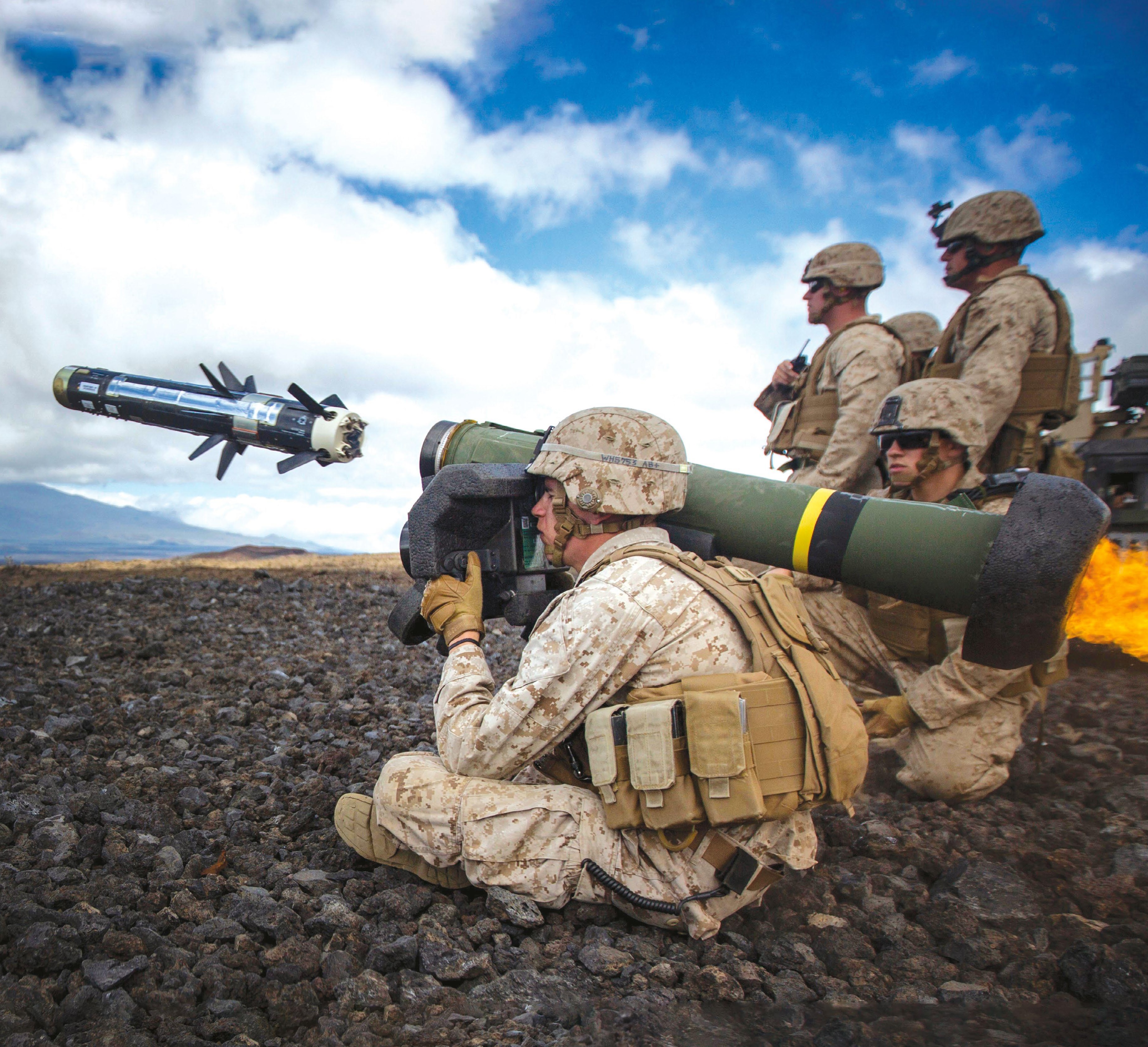MODERN ANTI-TANK WEAPONS
History of War
|Issue 111
Rapidly advancing technology has fuelled new generations of infantry and aerial anti-tank weapons
-

Anti-tank weaponry of the post-Cold War era, leaning heavily on the wave of military technology that began to emerge in the latter half of the 20th century, has led to the introduction of potent, man-portable missile and rocket systems as well as accurate, deadly systems fired from ground installations and aerial platforms such as helicopters, fixed-wing aircraft and unmanned drones.
Infantry systems often employ the concept of 'fire and forget', enabling a ground operator to aim, fire and then displace to avoid a counter-strike from the enemy; missiles fired from aircraft are often placed on target by sophisticated laser guidance systems. Although such technology has transformed the battlefield, resulting in a continuing advancement in both anti-tank weaponry and the defensive capabilities for the tank to protect itself, some systems have remained viable for many years, bridging the Cold War period well into the 21st century. The viability of armoured fighting vehicles and the effectiveness of weapons designed to kill the tank in combat have both been tested since the end of the Cold War, during Operation Desert Storm, the wars in Iraq and Afghanistan, and numerous other conflicts.
While the survivability of the armoured fighting vehicle on the battlefield has been improved with the introduction of countermeasures, explosive reactive armour (ERA), Chobham and other defensive initiatives, the anti-tank weapons available today are increasingly potent in firepower and accuracy. During the current war in Ukraine, one of the most prominent weapons systems is the American-made FGM-148 Javelin, a fire-and-forget man portable system introduced in the mid-1990s as a replacement for the M47 Dragon.

Denne historien er fra Issue 111-utgaven av History of War.
Abonner på Magzter GOLD for å få tilgang til tusenvis av kuraterte premiumhistorier og over 9000 magasiner og aviser.
Allerede abonnent? Logg på
FLERE HISTORIER FRA History of War

History of War
MORE MISS MONEYPENNY THAN MATA HARI WOMEN SPIES THROUGHOUT THE DECADES
THEY LOOKED LIKE ORDINARY HOUSEWIVES, MOTHERS AND SECRETARIES IN SENSIBLE CLOTHES AND STURDY SHOES. BUT THESE INNOCUOUS WOMEN WERE EMBARKED ON COURAGEOUS AND OFTEN TREACHEROUS MISSIONS AS SECRET AGENTS
4 mins
Issue 153

History of War
THE END OF GREAT POWERS
Full-spectrum analysis of a state's economy, technology, leadership, society and alliances could be a superior way of predicting battlefield performance
3 mins
Issue 153

History of War
THE BATTLE OF JERUSALEM 9 JANUARY - 11 DECEMBER 1917
During a campaign that lasted nearly a year, British and Arab forces defeated the Ottoman Turks and entered the ancient city
7 mins
Issue 153

History of War
QUEEN ELIZABETH CLASS BATTLESHIP
These five super-dreadnoughts set the standard for early 20th century warship design in speed, firepower and protection and were the first fast battleships of the age
4 mins
Issue 153

History of War
THE MASSACRE AT WOUNDED KNEE
In 1890, US troops killed more than 250 Lakota, at a location that remains the focus of resistance and dark controversy
10 mins
Issue 153

History of War
BORN IN NORTH AFRICA
HOW THE TUNISIA CAMPAIGN FORGED THE 'SPECIAL RELATIONSHIP'
3 mins
Issue 153

History of War
ANTI-TANK MINE
This lightweight General Service Mk V device could immobilise Hitler's heavy tanks and was used during fighting in Northwest Europe
1 mins
Issue 153

History of War
HEROES OF THE MEDAL OF HONOR BALDOMERO LOPEZ
During the daring landings at Inchon in 1950, this first lieutenant sacrificed his life to save his US Marine comrades
6 mins
Issue 153

History of War
NORTH KOREA'S ROCKET REVOLUTION
After the peninsula was divided by a long-term ceasefire, Pyongyang and Seoul raced to build weapons that could obliterate each other
4 mins
Issue 153

History of War
THE GREAT TRAIN RAID THE MOST DARING SAS MISSION OF WWII
DAMIEN LEWIS' LATEST SAS ADVENTURE IS CHARACTERISTICALLY FAST-PACED AND ACTION-PACKED
2 mins
Issue 153
Translate
Change font size

